
There's something magical about white flowers blooming indoors. They bring a touch of purity, brightness, and sophistication to any space while creating a sense of calm that's hard to match with other colors. Whether adorning a sunny windowsill, brightening a coffee table, or adding life to an office desk, white flowering houseplants offer year-round beauty with relatively minimal effort.
In this guide by thedailyECO, we'll explore 10 stunning white-flowered plants that thrive indoors. We'll cover what makes each plant special and how to care for them properly.
White Phalaenopsis orchid
White Phalaenopsis orchids are stunning plants that aren't as fussy as you might think. Their elegant white flowers, sometimes dotted with purple speckles, can last for months with proper care. In the wild, these orchids grow attached to trees rather than in soil, taking nutrients from the air and rain.
These orchids prefer their roots to dry out between waterings, with coconut fiber being an excellent potting material. Keep them in a warm spot with filtered light, away from direct sun. When you see multiple flowers appearing, it means you've hit the sweet spot with your care routine, something to be proud of.
A single Phalaenopsis bloom spike can last 2-3 months, making them one of the longest-flowering houseplants available.
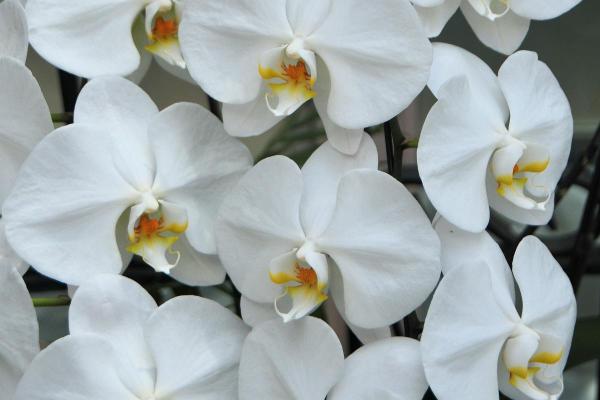
Peace Lily (Spathiphyllum)
Peace lilies are among the most forgiving flowering houseplants you can grow. They bounce back after neglect and stay lush green even in less-than-ideal conditions. Their main weakness is too much water, which turns their leaves yellow. Despite their name, peace lilies aren't true lilies at all, they belong to the Araceae family along with philodendrons.
For those beautiful white flowers (technically called spathes), water weekly and add diluted plant food monthly. Without this care, they'll stay green but might skip flowering. Peace lilies handle typical indoor conditions exceptionally well, even thriving in lower light where many flowering plants struggle.
Peace lilies were included in NASA's Clean Air Study and found to filter out five harmful household toxins, including benzene and formaldehyde.
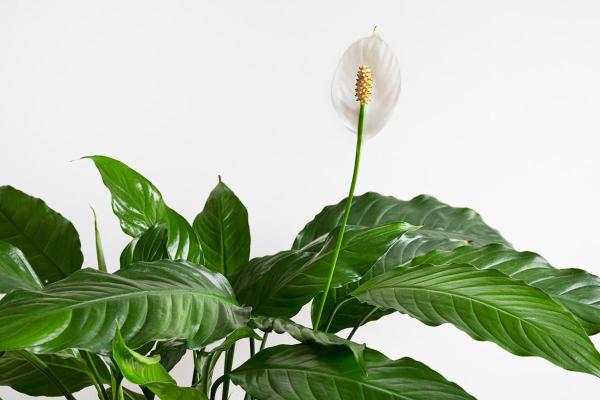
Calla Lily (Zantedeschia aethiopica)
Calla lilies bring elegant, curved white blooms that add sophistication to any room. Once primarily outdoor plants, newer varieties grow beautifully indoors. These are the same striking flowers that frequently appeared in Diego Rivera's famous paintings.
Growing them in containers lets you control their moisture, which directly affects how many flowers you'll get. While they adapt to indoor settings, giving them some morning sunshine occasionally will significantly increase blooming, try moving them to a bright window periodically for best results.
The calla lily is symbolic of rebirth and resurrection, which is why it's often associated with Easter and spring celebrations. In Victorian times, calla lilies represented magnificent beauty, which is partly why they've become so popular in wedding bouquets.
Is your peace lily all green and no white? Learn the simple adjustments that can transform a flowerless specimen into a blooming beauty in our detailed troubleshooting article.
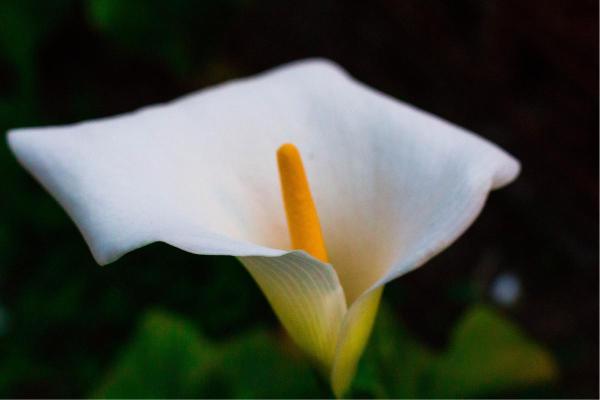
White Hydrangea (Hydrangea macrophylla)
Indoor hydrangeas produce impressive clusters of white flowers while staying compact enough for home growing, usually under three feet tall. To keep them thriving, make sure they get good light, fresh air circulation, and regular feeding.
It helps to know that potted hydrangeas typically live about four years, so don't worry if they begin to decline after this period. Their spectacular but relatively brief flowering makes them perfect seasonal highlights in your indoor garden collection.
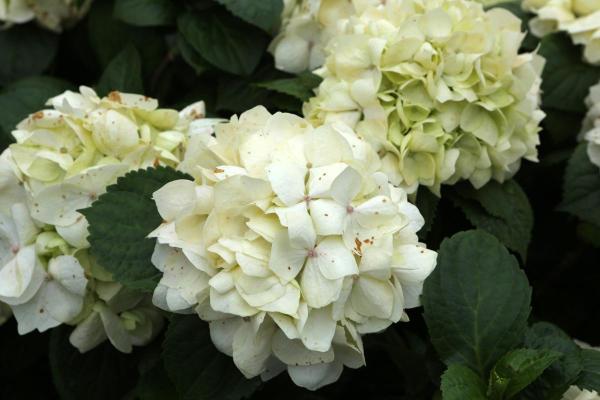
Chinese Jasmine (Jasminum polyanthum)
Chinese jasmine fills rooms with its amazing fragrance when its white star-shaped flowers bloom. However, it is important to note that hydrangea flower color can change based on soil pH - in acidic soil they turn blue, in alkaline soil they turn pink, but white hydrangeas stay white regardless of soil chemistry.
The secret to success is creating the right growing environment, particularly maintaining good humidity.
Keep jasmine away from cold drafts while providing bright, indirect light and steady temperatures. Regular feeding during growing season directly impacts how many fragrant flowers you'll enjoy. When properly grown, jasmine offers an incredible sensory experience, with its sweet scent often noticeable throughout nearby rooms.
In Japan, hydrangeas are associated with apologies and gratitude because an emperor once gave them to apologize to a maiden's family.

White Chinese Chrysanthemum (Chrysanthemum morifolium)
White chrysanthemums provide flowers from fall through spring, offering blooms when many other plants are dormant. Their distinctive round flowers consist of numerous white petals forming perfect pom-poms.
With a cultivation history spanning over 2,500 years, these plants bring a touch of ancient tradition to modern homes. Their extended blooming season makes them particularly valuable during winter months when flowering houseplants are scarce.
Jasmine flowers are harvested at night when their scent is strongest, particularly for perfume production. A single jasmine plant in bloom can perfume an entire room, as its scent is released most strongly in the evening to attract night-pollinating moths.
Create a cohesive look by matching your indoor white blooms with outdoor counterparts. Our guide to white-flowering garden plants will help you extend that clean, sophisticated aesthetic to your yard.
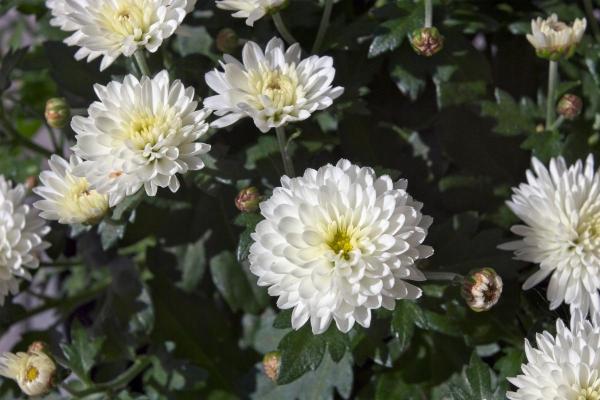
White Azalea (Rhododendron species)
White azaleas offer refined beauty for indoor growing. Their success depends on creating the right conditions: bright filtered light and somewhat cooler temperatures than many houseplants prefer, as too much heat prevents blooming.
Keep soil consistently moist but not waterlogged, ideally using rainwater or filtered water instead of tap water. Humidity greatly affects their health, so use a humidity tray or regular misting for best results. These extra steps reward you with pristine white blooms that really stand out in any room.
In many Asian countries, chrysanthemum tea is consumed for its medicinal properties and antioxidant benefits.
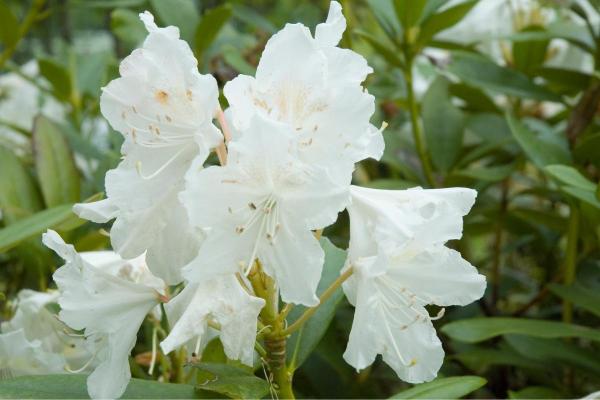
Daisy (Bellis perennis)
Classic daisies can thrive indoors when given enough light, they need about 3-4 hours of brightness daily, so a good window spot is essential. Azaleas can live for decades, with some Japanese azalea specimens known to be over 150 years old.
Protect them from harsh afternoon sun and maintain comfortable temperatures between 60-75°F. Regular watering keeps soil evenly moist without becoming soggy. With proper care, you'll enjoy those cheerful white petals with sunny yellow centers during spring and summer.
Keep in mind that all parts of the azalea plant are toxic to humans and pets, containing andromedotoxins that can cause severe illness.
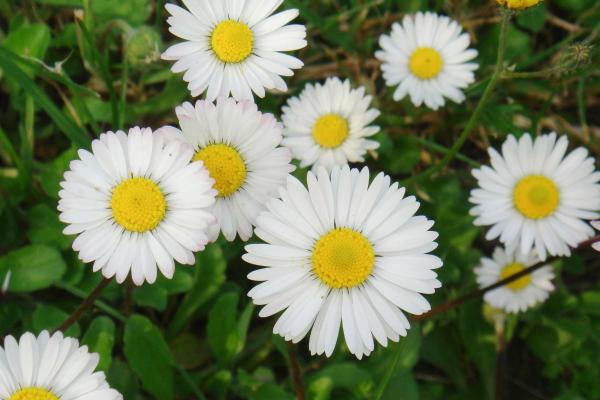
White Begonia (Begonia semperflorens)
White begonias offer compact beauty that's perfect for smaller spaces. Coming from warm regions, they enjoy similar conditions in our homes. While white varieties are particularly bright and clean-looking, pink options are also available if you want variety. The name "daisy" comes from "day's eye" because the flowers open at dawn and close at dusk.
These plants actually do better indoors because they're sensitive to direct sun, the filtered light in most homes protects their delicate leaves while providing enough brightness for flowering. Place them in bright rooms but away from direct sunlight that can damage their leaves.
Medieval surgeons would have soldiers chew daisies before extracting arrows to help reduce pain, as daisies contain compounds similar to those in aspirin.
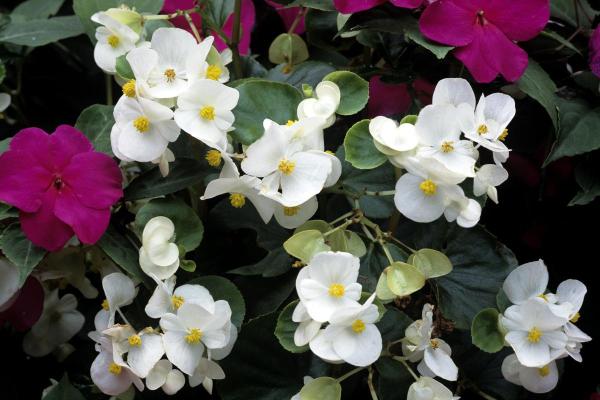
White Poinsettia (Euphorbia pulcherrima)
White poinsettias offer an elegant alternative to the traditional red varieties during the holiday season. There are over 1,800 different species of begonias, making them one of the largest genera of flowering plants.
These plants develop their showy white "flowers" surrounding the small true flowers when they receive longer periods of darkness.
For longer-lasting plants, try to find ones from specialty growers rather than big box stores, as growing techniques significantly affect how long they'll thrive in your home. Plant breeders have expanded beyond classic red to include pink, yellow, and especially elegant white forms, giving you more design options during the holidays.
Some begonia species' leaves are edible and used in salads in parts of Asia and South America for their crunchy texture and tart flavor.
Transform your home into a perpetual garden with our selection of plants that refuse to stop flowering, regardless of season or time of year.

If you want to read similar articles to Best White Flowering Indoor Plants for Home Decor, we recommend you visit our Indoor plants category.
- Del Saber, C. (2021). Indoor Plant Care Guide: Discover How to Keep Your Live Plants in Top Condition Year-Round: Discover how to keep your live plants in top condition year-round. Argentina: Editorial Imagen LLC.
- Gough, T., Longman, D., Humphreys, M. (1987). How to care for your flowering houseplants. Spain: Plaza y Janés.